The theme of National Library Week this year (April 6–12, 2025) is “Drawn to the Library,” and there are many reasons to be drawn to the government publications collection at Sycamore Library. One of the most interesting and most surprising is to explore the many government publications that can help you learn to draw. We have documents that teach cartooning, drafting, sketching, and other drawing skills at many different levels.
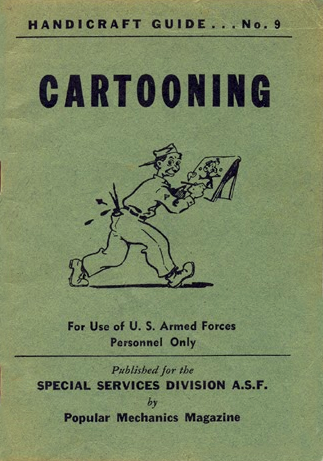
Cartooning
This instructional pamphlet is one of a series of handicraft guides published by Popular Mechanics Magazine for the U.S. Armed Forces to provide physical and mental rehabilitation for recovering soldiers and to help soldiers develop practical skills that they could use to support themselves after leaving the armed forces. It is an instructional guide on how to draw cartoons both as a hobby and as a professional. It includes advice on how to practice and which drawing materials to buy, as well as drawing instruction divided into such subject areas as anatomy, expressions, caricatures, composition, perspective, and more.
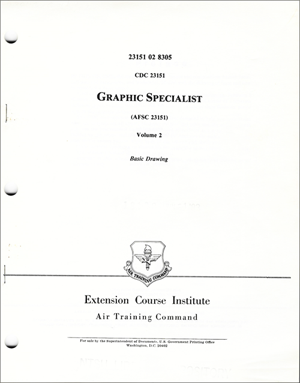
Graphic Specialist (AFSC), Volume 2: Basic Drawing
This is the second volume in a three-volume set of student texts intended for use in an extension course to prepare Air Force graphics specialists. It explains fundamental concepts of drawing such as form, line, tone, color theory, and various media, then goes into the complexities of drawing the human form, expands into cartoons and caricatures, and describes how to create landscapes and seascapes. A section on layout explains how to plan and sketch out your ideas, following basic rules of composition, then refine your concepts into a more detailed layout called a comprehensive to bring you closer to a finished artwork. Each section includes instructional text, illustrations, exercises, and answers to the exercises.
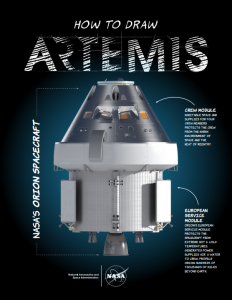
Learn How to Draw Artemis!
With the Artemis program, NASA will send the first woman and the next man back to the Moon and will build an infrastructure that will allow us to stay for the long term and prepare for an eventual mission to Mars. Much in the same way that NASA engineers and technicians sketched out early concepts for space suits, rockets, spaceships, ground systems, and orbiting platforms, by following these lessons you can use similar techniques to draw NASA’s Orion spacecraft, Space Launch System (SLS) rocket, Mobile Launcher Platform (MLP), Orion Crew Survival System (OCSS) Suit, Exploration Extravehicular Mobility Unit (xEMU), Gateway (humanity’s first spacecraft to orbit the Moon), Crawler-Transporter, Lunar Terrain Vehicle (LTV), the iconic Vehicle Assembly Building (VAB), the Deep Space Network (DSM—an interplanetary communications system), and the historic Launchpad 39B.B. Supplementary coloring pages help deepen your understanding of our home planet and far away destinations.
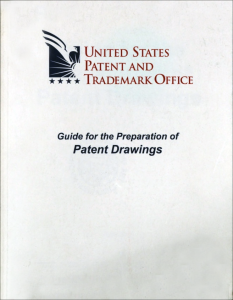
Guide for the Preparation of Patent Drawings
Have you noticed how patent drawings seem to have a relatively uniform look and wondered how that look is achieved—those crisp black lines on a white background, devoid of delicate shading or unnecessary detail or color, with details clarified by numbers, arrows, and lines? They reason patent drawings look similar is because they must follow precise guidelines described in statutes (35 U.S.C. § 113 – Drawings) and regulations (37 CFR § 1.84 – Standards for drawings). Patent applications (other than non-provisional applications) that don’t follow these guidelines stand a good chance of being rejected. The U.S. Patent and Trademark Office has prepared this guide for anyone who is making a drawing to accompany a patent application. It includes all the legal requirements and examples of drawings that meet the guidelines. One more thing to keep in mind about patent drawings—they often make wonderful coloring pages!
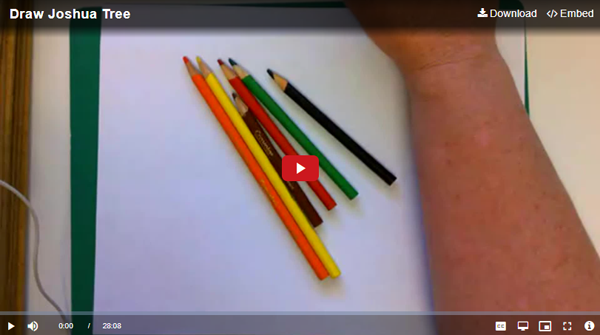
Draw Joshua Tree
In the 19th century several painters, sculptors, photographers, and writers began to capture the beauty and drama of the American western landscape, making Americans in the east aware of the natural resources and breathtaking scenery rapidly disappearing in this part of the world. The awareness promoted by this interplay of art and conservation eventually led to the establishment of our national parks. This 28-minute video demonstrates how to draw a scene of the Mojave Desert within Joshua Tree National Park, developing skills that can be used to create artworks inspired by other natural resources. An accompanying article entitled “Draw Joshua Tree: Teaching with Museum Collections Lesson Plan” provides further details, resources, and historical text for using this drawing exercise within the classroom.

Sketching Is Seeing
Sketching a work of art is a wonderful way to interact with that art as well as a way to learn artistic techniques that can be applied elsewhere. In this series of videos, artist Stephanie Moore (pictured above) demonstrates six sketching techniques that can be used to enhance appreciation of specific art works in the National Gallery of Art. The activities include positive and negative space drawing, less dominant hand drawing, block-in shape drawing, contour drawing, view finder drawing, and minimalist line drawing.
Dav Pilkey: “How to Draw” Videos
During the COVID-19 quarantine, beloved author and illustrator Dav Pilkey recorded a series of videos demonstrating how to draw Piggy, Barky McTreeFace, Petey, Flippy, Grampa, and other characters from his “Dog Man” series. He even recorded a video drawing us through a tour of the Library of Congress.
Would You Like to Know More?
Visit Sycamore Library on the University of North Texas Campus to explore the many resources in our Government Documents Collection. Sycamore Library is also host to the UNT Libraries Juvenile and Curriculum Materials Collections, which contain many children’s and young adult books related to drawing.
If you need assistance with finding or using government information resources, please visit the Service Desk in the Sycamore Library during regular hours, contact us by phone (940) 565-4745), or send a request online to govinfo@unt.edu.
If you need extensive, in-depth assistance, we recommend that you e-mail us or call the Sycamore Service Desk at (940) 565-2870 to make an appointment with a member of our staff.
Article by Bobby Griffith.


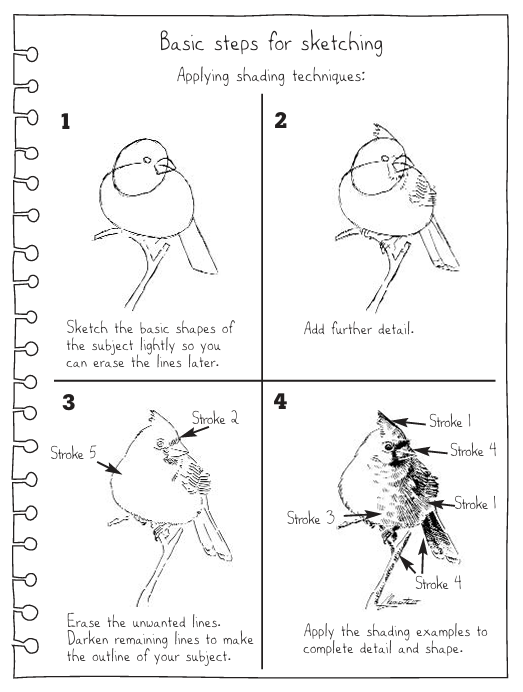
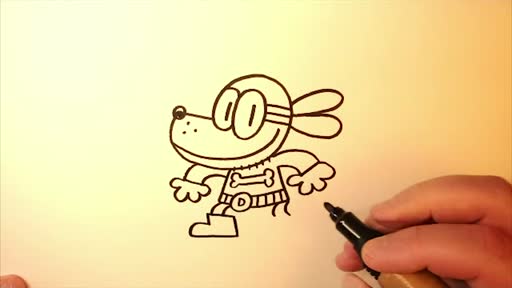
Leave a Reply